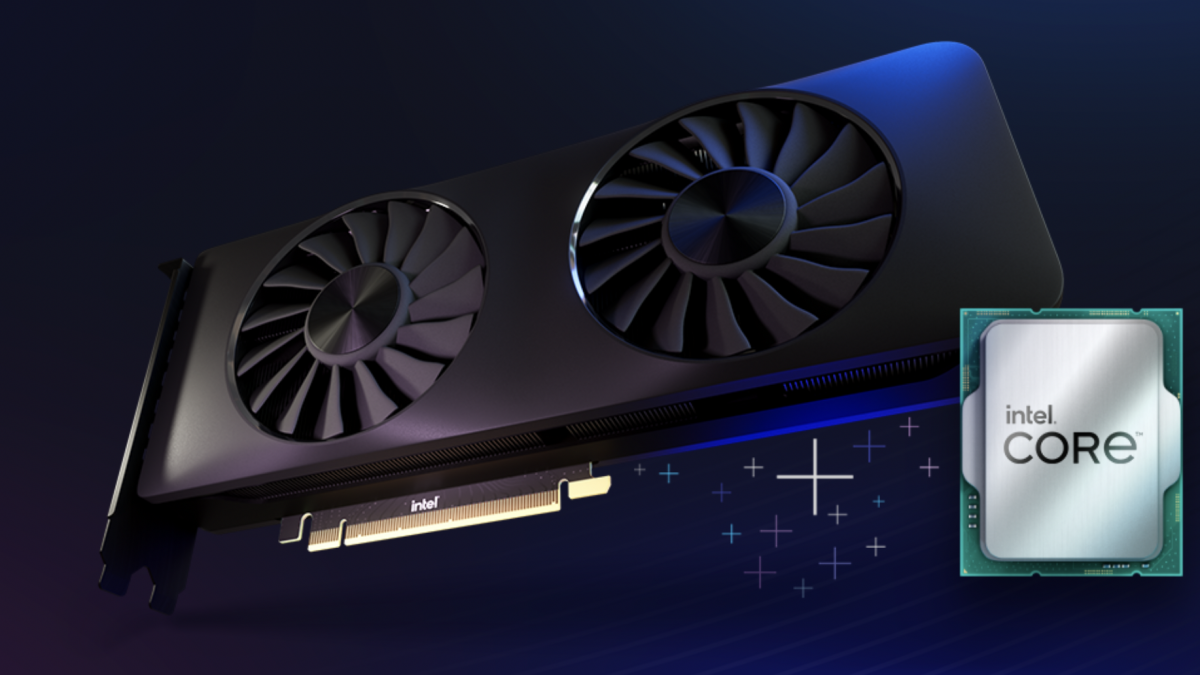[ad_1]
Intel’s PR team has been busy behind the scenes, cracking the whip on a group of testers in the Intel labs. Together they have examined which Intel CPUs are best paired with Intel’s Arc GPUs for what it calls a “balanced build.” The logic is that YouTuber reviewers always use the most high-end CPUs available for GPU testing to eliminate bottlenecks, but that’s not a good “real-world” example to emulate in your own PC build.
To solve this problem, the team has produced a trove of real-world gaming benchmarks to determine the best bang for your buck CPU+GPU combinations. It’s now offering these combos as pre-assembled systems from its partners, so it’s essentially a marketing campaign, but you could also use the info for a DIY build.
The gist of Intel’s experiment was to find out how its GPUs scale with each of its CPUs. To find out the best balance of cost and performance, Intel tested various CPUs with its GPUs to discern the sweet spot. The TL;DR version of its newly acquired 15,000 data points is that a Core i5 or i7 CPU goes best with the company’s high-end Arc A770 and A750 GPUs. If you’re stepping down to the entry-level Arc A380 GPU, you should use a Core i3 or i5 CPU. Intel’s testing found that you would only benefit from a Core i9 CPU if you had a monster GPU such as an RTX 4090.
Essentially, Intel’s testing discovered the point of diminishing returns for its GPUs. As you add more CPU cores and higher clocks to the mix, the benefits decrease. When you add the extra cost involved by going from an i5 or i7 to an i9, which is roughly double the price in some cases, it’s not worth it. That is unless you also need a high-end CPU for content creation. For gaming, though, the i7 is the top of the stack, at least for Intel’s GPUs. This isn’t rocket science, as Core i9 CPUs have always been more about bragging rights than economics regarding gaming.

If you just look at the blue line, you see Intel’s A750 GPU doesn’t benefit much from more expensive CPUs.
Credit: Intel
For example, Intel says the midrange Core i5-12400F almost matches the performance of more expensive CPUs in DX12 (above). In DX11, there was a bit more variance, but this $200 six P-core CPU offers 90% of the performance of the Core i9, which is 3X more expensive, so it’s not worth it in any scenario other than when paired with an “unrestrained” GPU like the RTX 4090.
Overall, this seems like Intel is reminding folks about its GPUs now that both Nvidia and AMD are about to encroach on its midrange turf. The RTX 4060 Ti 8GB launches next week at $399, with a 16GB version and a regular 4060 launching in July for $499 and $299, respectively. AMD is also prepping a Radeon 7600, which has TBD pricing but will probably land around $299. That is adjacent to Intel’s “sweet spot,” to so speak, as its 16GB A770 is $349, and the 8GB model is $329. The Arc A750 is just $249, so we’ll finally see how Intel’s GPU stacks up against the newest GeForce and Radeon GPUs very soon.
If you’re convinced and ready to join Team Blue, Intel has links to its partner builds here.
[ad_2]
Source link

